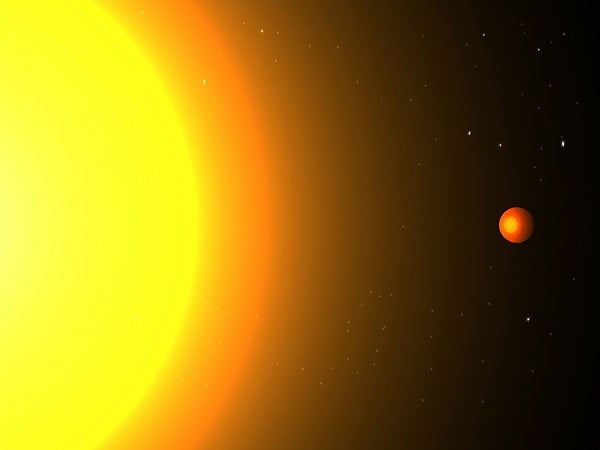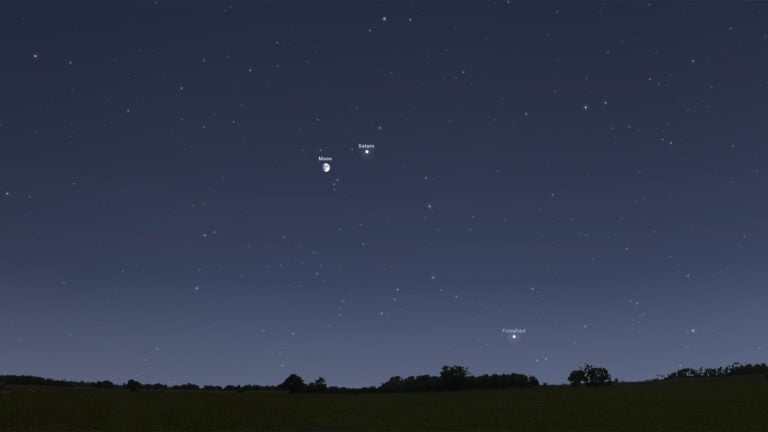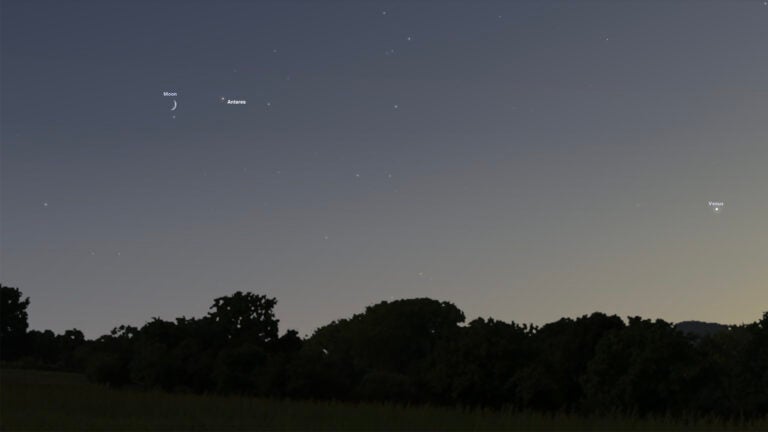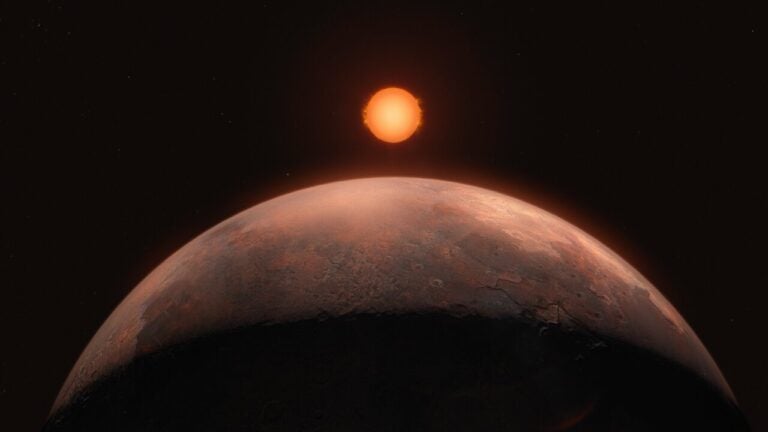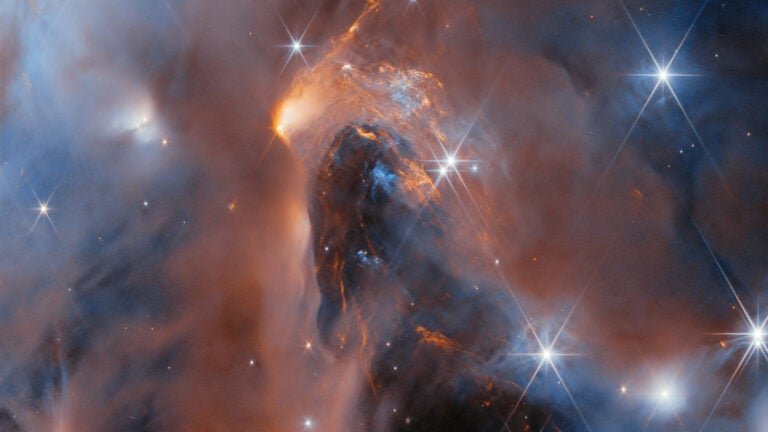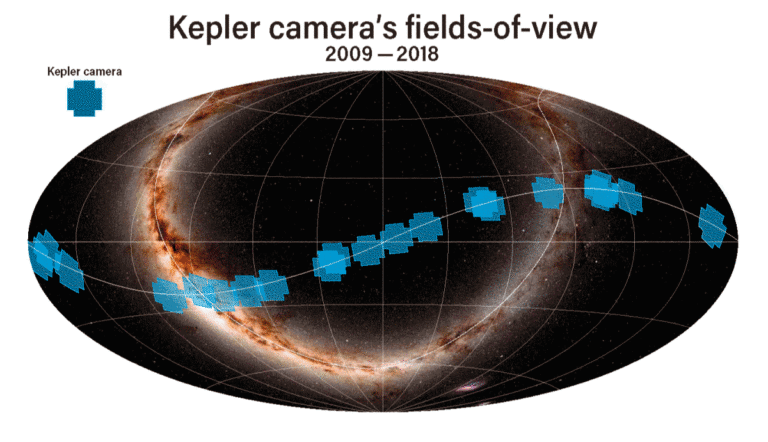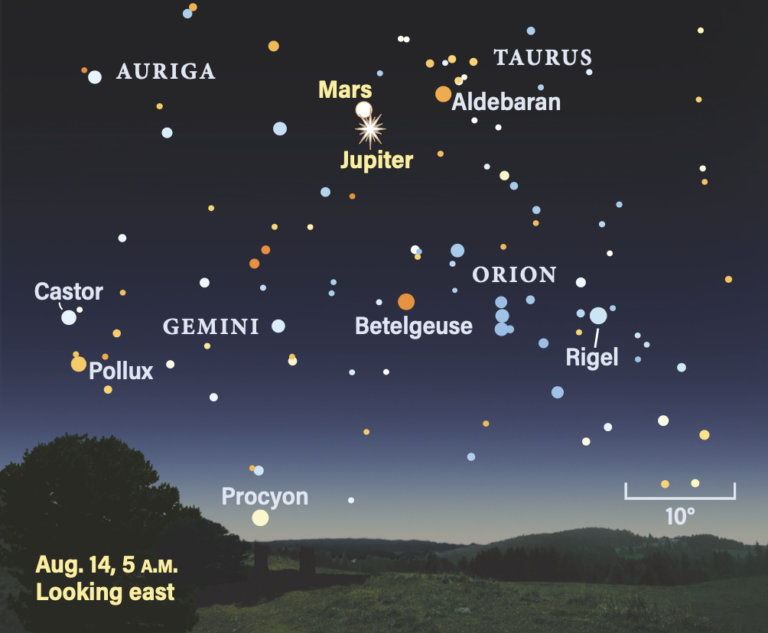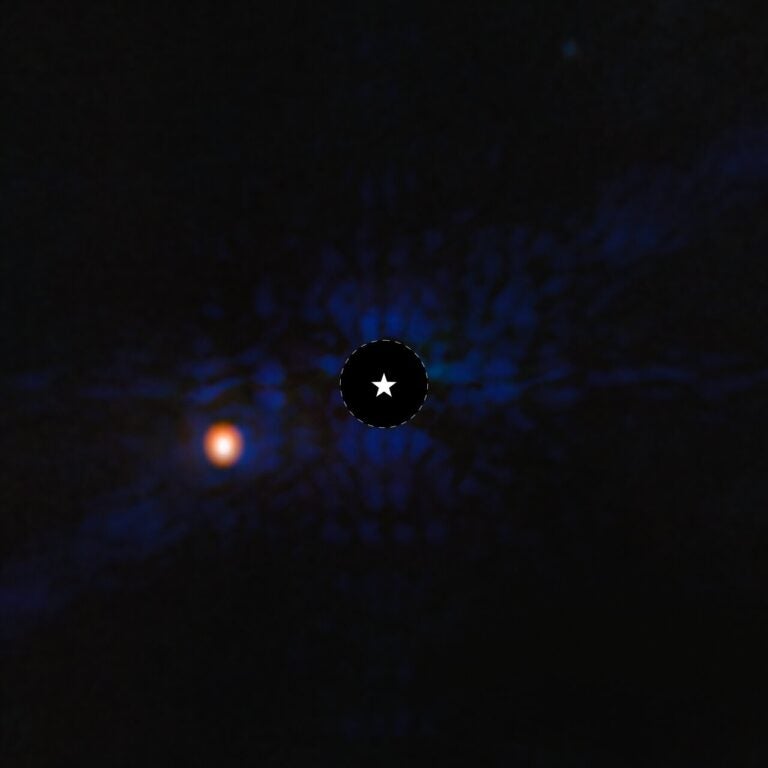Researchers at the Massachusetts Institute of Technology in Cambridge have discovered an Earth-sized exoplanet named Kepler-78b that whips around its host star in a mere 8.5 hours — one of the shortest orbital periods ever detected. The planet is extremely close to its star — its orbital radius is only about three times the radius of the star — and the scientists have estimated that its surface temperatures may be as high as 3000 kelvin, or more than 5000° Fahrenheit (2700° Celsius). In such a scorching environment, the top layer of the planet is likely completely melted, creating a massive roiling ocean of lava.
What’s most exciting to scientists is that they were able to detect light emitted by the planet — the first time that researchers have been able to do so for an exoplanet as small as Kepler-78b. This light, once analyzed with larger telescopes, may give scientists detailed information about the planet’s surface composition and reflective properties.
Kepler-78b is so close to its star that scientists hope to measure its gravitational influence on the sun. Such information may be used to measure the planet’s mass, which could make Kepler-78b the first Earth-sized planet outside our solar system whose mass is known.
Members of that same group, along with others at MIT and elsewhere, observed KOI 1843.03, a previously discovered exoplanet with an even shorter orbital period — just 4.25 hours. The group, led by Saul Rappaport, determined that in order for the planet to maintain its extremely tight orbit around its star, it would have to be incredibly dense, made almost entirely of iron, otherwise the immense tidal forces from the nearby star would rip the planet to pieces.
“Just the fact that it’s able to survive there implies that it’s very dense,” said Josh Winn, from MIT. “Whether nature actually makes planets that are dense enough to survive even closer in, that’s an open question, and would be even more amazing.”
Dips in the data
In their discovery of Kepler-78b, the team looked through more than 150,000 stars that were monitored by the Kepler telescope, a NASA space observatory that surveyed a slice of the galaxy. Scientists are analyzing data from Kepler in hopes of identifying habitable Earth-sized planets.
The goal for Winn and his colleagues was to look for Earth-sized planets with very short orbital periods. “We’ve gotten used to planets having orbits of a few days,” Winn said. “But we wondered, what about a few hours? Is that even possible? And sure enough, there are some out there.”
To find them, the team analyzed light data from thousands of stars, looking for telltale dips indicating that a planet may periodically pass in front of a star.
Picking out these tiny dips among tens of thousands of light curves is typically a time-intensive ordeal. To speed the process along, the group devised a more automated approach, applying a basic mathematical method known as the Fourier transform to the large data set. The method essentially whittles the field to those light curves that are periodic, or that exhibit a repetitive pattern.
Stars that host orbiting planets may display periodic dips of light each time a planet crosses, or transits, the star. But there are other periodic stellar phenomena that can affect light emission, such as a star eclipsing another star. To pick out those signals associated with actual planets, Roberto Sanchis-Ojeda from MIT searched through the set of periodic light curves, looking for frequent smaller dips in the data midway between the planetary transits.
The group was able to detect the light given off by the planet by measuring the amount by which the overall light dimmed each time the planet passed behind the star. The researchers posit that the planet’s light is possibly a combination of radiation from its heated surface and light reflected by surface materials, such as lava and atmospheric vapor.
“I was just looking by eye, and all of a sudden I see this extra drop of light right when it was expected, and it was really beautiful,” Sanchis-Ojeda said. “I thought, we’re actually seeing the light from the planet. It was a really exciting moment.”
Living on a lava world
From their measurements of Kepler-78b, the team determined that the planet is about 40 times closer to its star than Mercury is to our Sun. The star around which Kepler-78b orbits is likely relatively young, as it rotates more than twice as fast as the Sun — a sign that the star has not had as much time to slow down.
While it is about the size of Earth, Kepler-78b is most certainly not habitable due to its extreme proximity to its host star. “You’d have to really stretch your imagination to imagine living on a lava world,” Winn says. “We certainly wouldn’t survive there.”
But this doesn’t entirely rule out the possibility of other habitable, short-period planets. Winn’s group is now looking for exoplanets that orbit brown dwarfs — cold, almost-dead stars that somehow failed to ignite.
“If you’re around one of those brown dwarfs, then you can get as close in as just a few days,” Winn said. “It would still be habitable, at the right temperature.”

